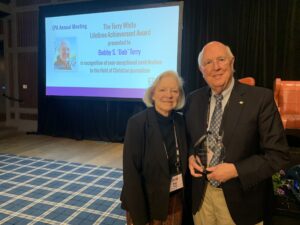
NEW ORLEANS (BP) — “So what does this prove?”
Someone asked this well-intentioned question about New Orleans Baptist Theological Seminary’s ongoing excavation in Israel of the Gezer water system after I posted an article about it two years ago. The truth is, our major find that season did not “prove” anything in the Bible.
Archaeology has done much to shed light on the Bible and sometimes archaeologists uncover evidence that affirms key aspects of the biblical story. The Dead Sea Scrolls provided very early copies of most Old Testament books and gave further evidence to the reliability of Scripture. King David has been attested through inscriptions. And the unearthed ruins of biblical cities illustrate how well biblical writers understood the geography of the land. But more often than not, the finds at sites in Israel are more mundane in nature, primarily dealing with daily life of ancient peoples.
This leads some to ask why biblical archaeology is important to Christians. For me, an archaeologist-in-training with only four digs under his belt, the answer is context and a love for Scripture. I think the same can be said for travel in the Bible lands.
Archaeology and Bible lands travel create a framework for more informed, thoughtful study of the Bible. For me, there are great reasons for evangelical Christians to keep digging.
As a child attending First Baptist Church in Calvin, Okla., my image of the Holy Land looked like eastern Oklahoma, filled with rolling hills and oak trees. As I read the Bible, I pictured what was familiar to me. The Jordan River looked like the South Canadian River. I imagined David picking up smooth stones from a brook similar to Sandy Creek near my home. Later, as I saw photographs of biblical places and terrain, my contextual understanding grew.
Then in 2005, I took my first trip to Israel.
I expected the trip to be a spiritual mountaintop experience and it was in some ways. But, as I visited the places where Jesus walked, the Old Testament cities and Jerusalem, it was the lay of the land and the ruins that made an impression on me. It was real to me in a new way. Travel like this creates a framework for study of the Bible. Archaeology exposes ancient ruins and provides clues to the way people lived so we can better understand the cultures and people mentioned in the text.
Gaining a contextual framework for Bible study through archaeology and travel has given me a greater love for the Bible. Armed with a better mental picture of the biblical world, the pages of the Bible spring to life as I read. The message is the same — it is God’s true Word — but I am able to approach this message with a fresh attitude.
Context also helps us bridge the gap between our modern times and the times of Abraham, Moses, David and Jesus.
We cannot deny the significance of the gap between us and the days when Abraham (called Abram at the time) decided to reject the idols of his family and follow the one true God. However, we often read his story and other Old Testament accounts with 21st-century, post-resurrection eyes. The context gained from archaeology and travel helps us step through this fog of time.
It is not only time that creates a gap, it is also societal structure. With the rapid urbanization of the United States over the past decades, many Americans have little experience with the agrarian lifestyle we find in the pages of Scripture. I fancy myself as a person of the land. I grew up on a sheep farm and had daily agricultural chores as a child. And though I have lived the modern urban life for the past 17 years, I am still in touch with the land. This background has been valuable in my study of the Bible.
 Archaeology also helps us understand the people of the Bible. My thoughts about the Canaanites grew this summer at Gezer as we uncovered a series of handholds on the walls of the water system — an ancient “handrail” if you will. When I put my hands in these holds during our weeks at Gezer, I thought about the people who first used them and wondered about lives. Who were they? What were they like?
Archaeology also helps us understand the people of the Bible. My thoughts about the Canaanites grew this summer at Gezer as we uncovered a series of handholds on the walls of the water system — an ancient “handrail” if you will. When I put my hands in these holds during our weeks at Gezer, I thought about the people who first used them and wondered about lives. Who were they? What were they like?
Designed and carved thousands of years ago — maybe as early as 2000 B.C. — the holds served the residents of Gezer for many years. Each day they placed their hands in these same holds as they walked up and down the steps of the water system. The Gezer water system gave me a glimpse into the lives of an ancient people. This massive rock-hewn water system shows the great lengths these people had to go to secure a daily water supply, walking the 80-something steps down to the pool with water vessels and toting out the water they needed.
Who knows how the people of Gezer felt about the water system. Maybe the Canaanites in the city held the system in some sort of reverence or dedicated it to some deity. Maybe they viewed it as a mundane part of their daily life the way we look at our morning commutes.
It is thoughts like these that motivate me as I seek to understand the people and places of biblical times. It is a quest for context and growing love for Bible study that keeps me digging.
–30–
Gary D. Myers is the director of public relations at New Orleans Baptist Theological Seminary and a participant in the Gezer Water System Expedition.
















